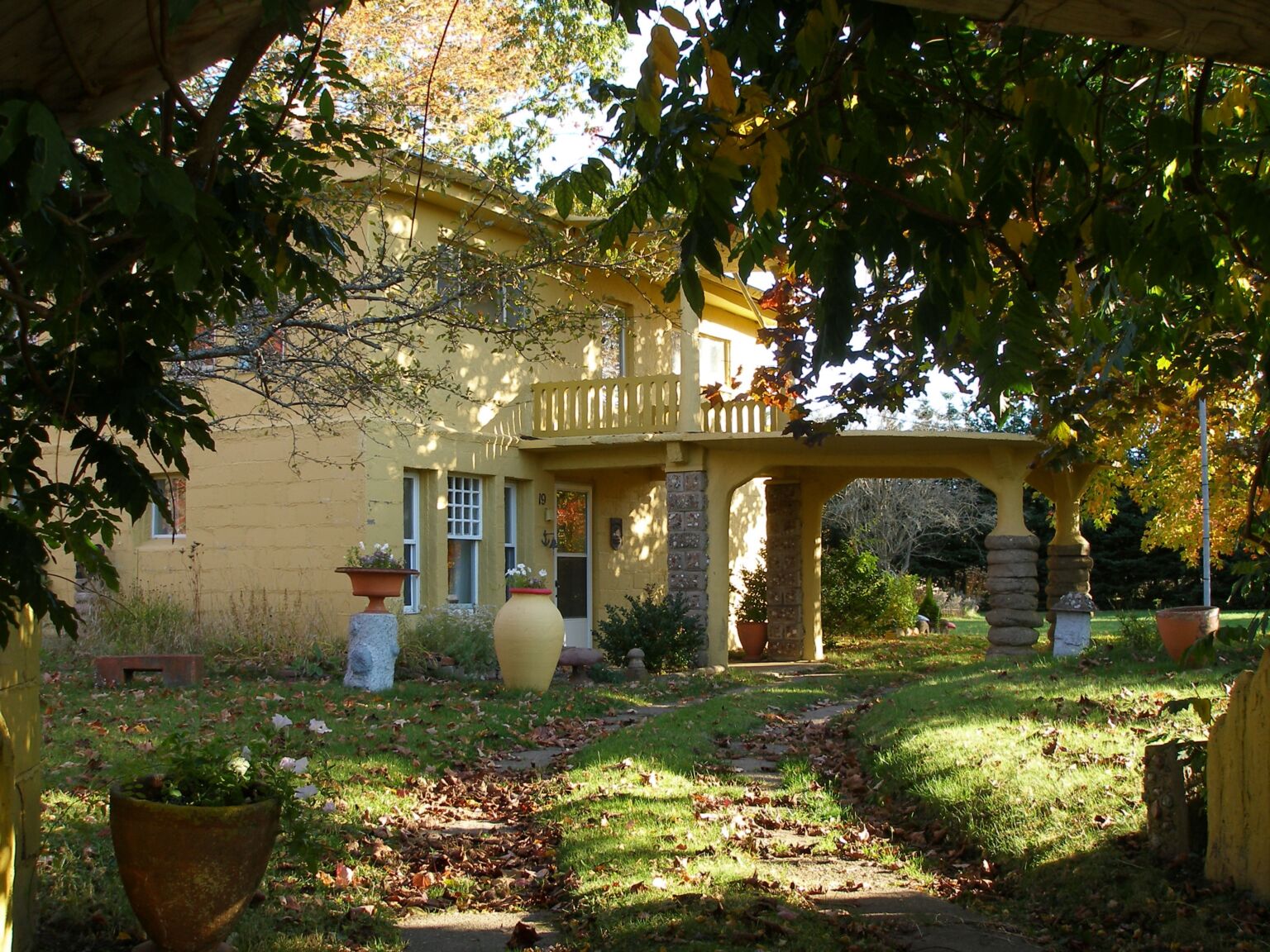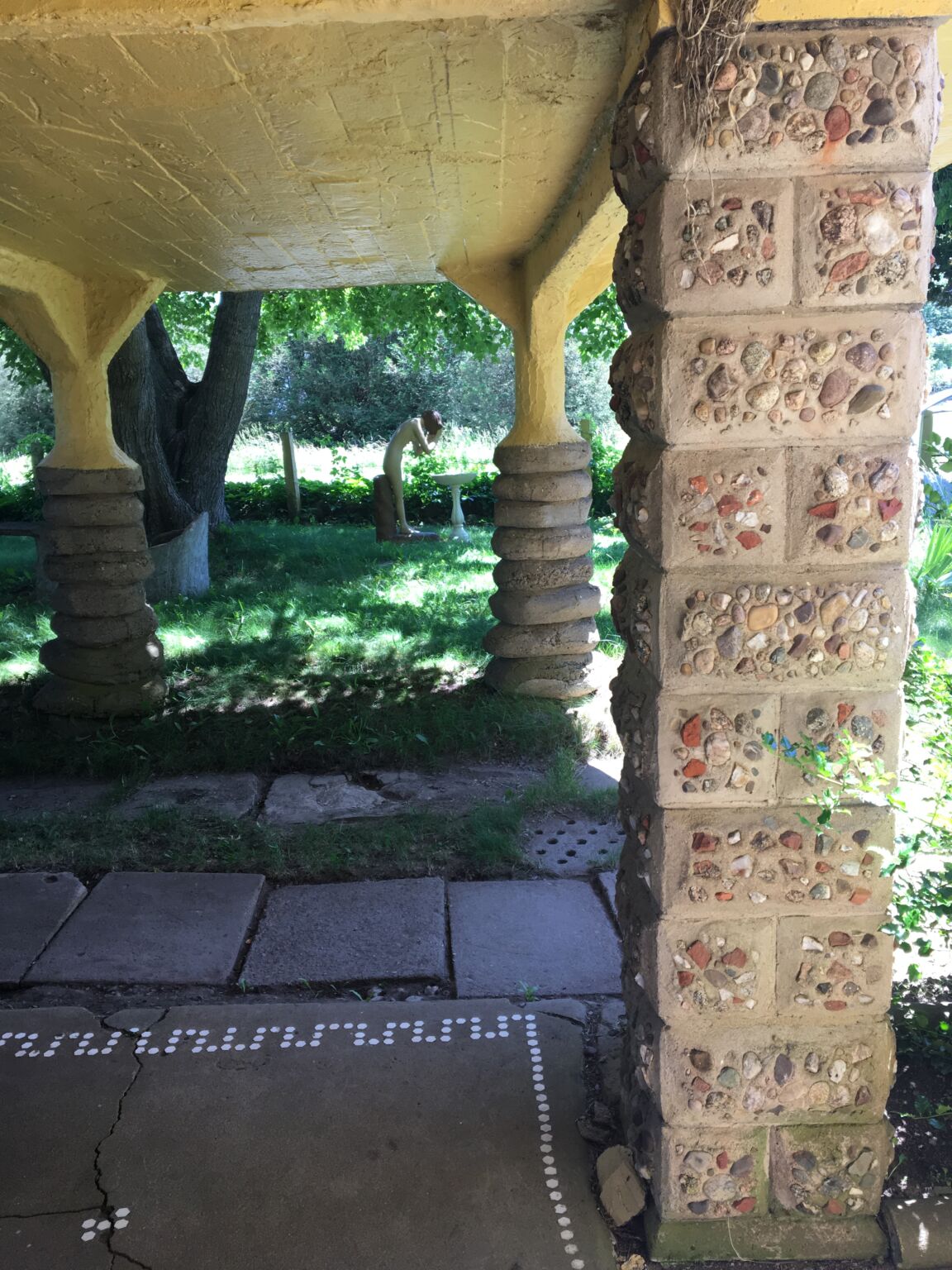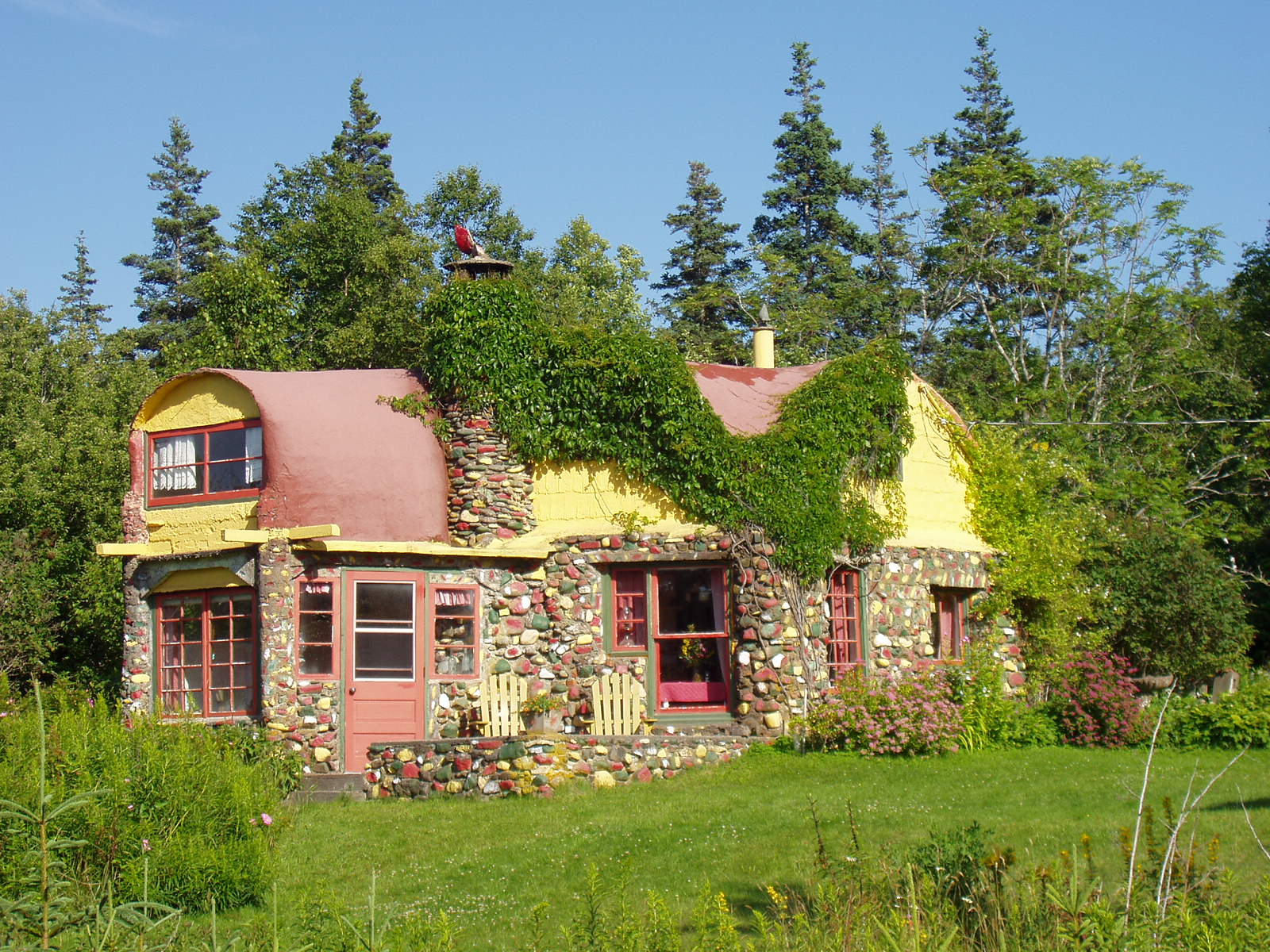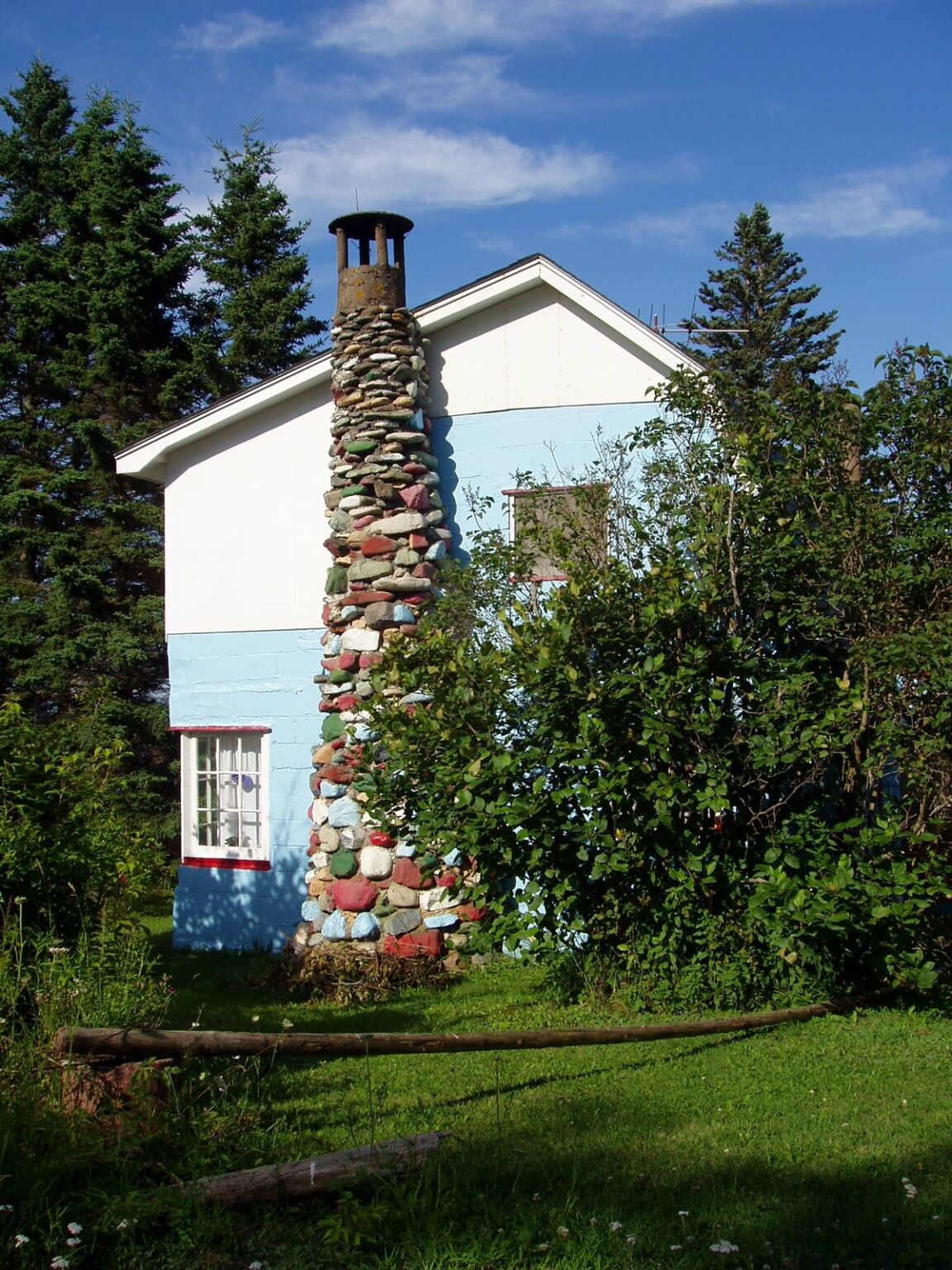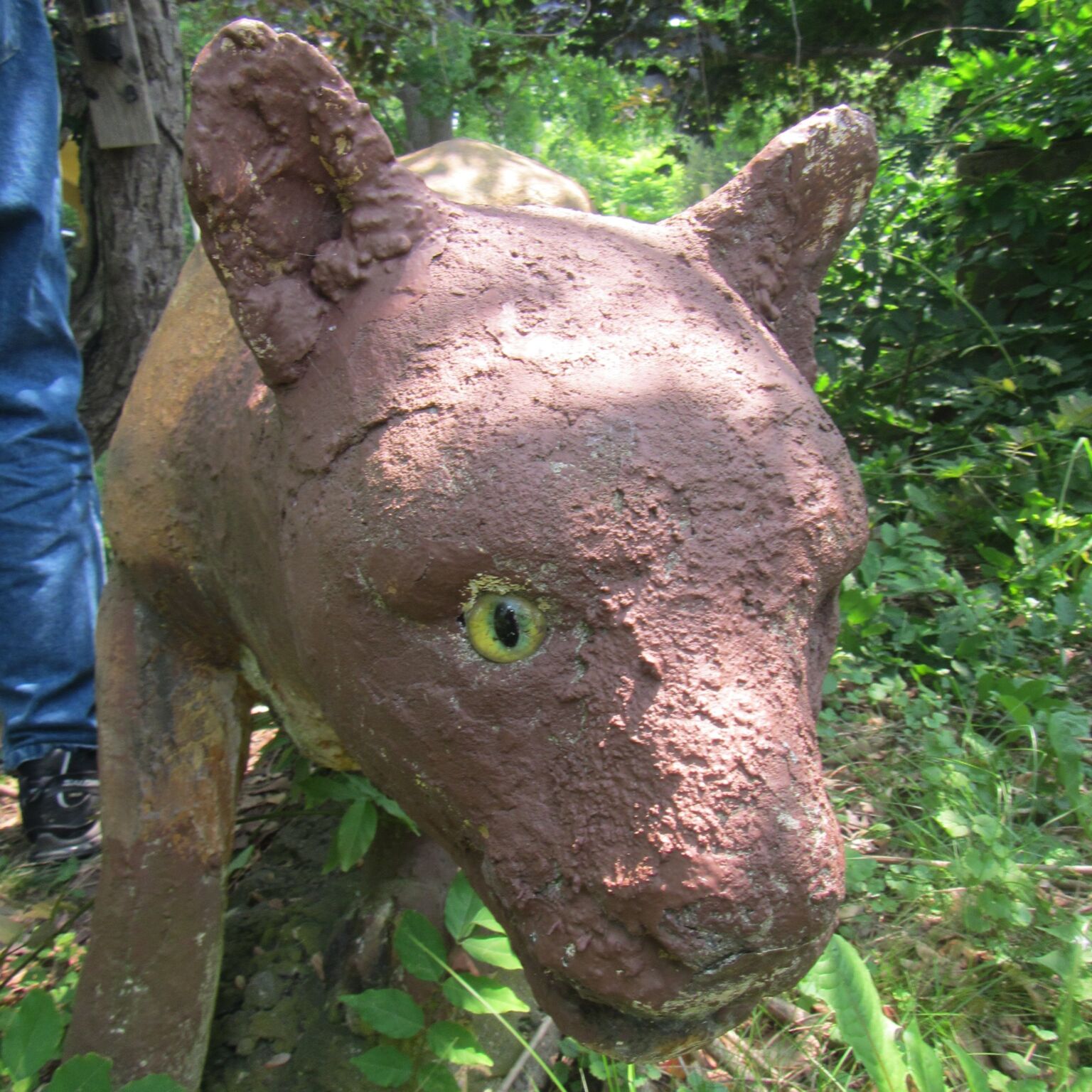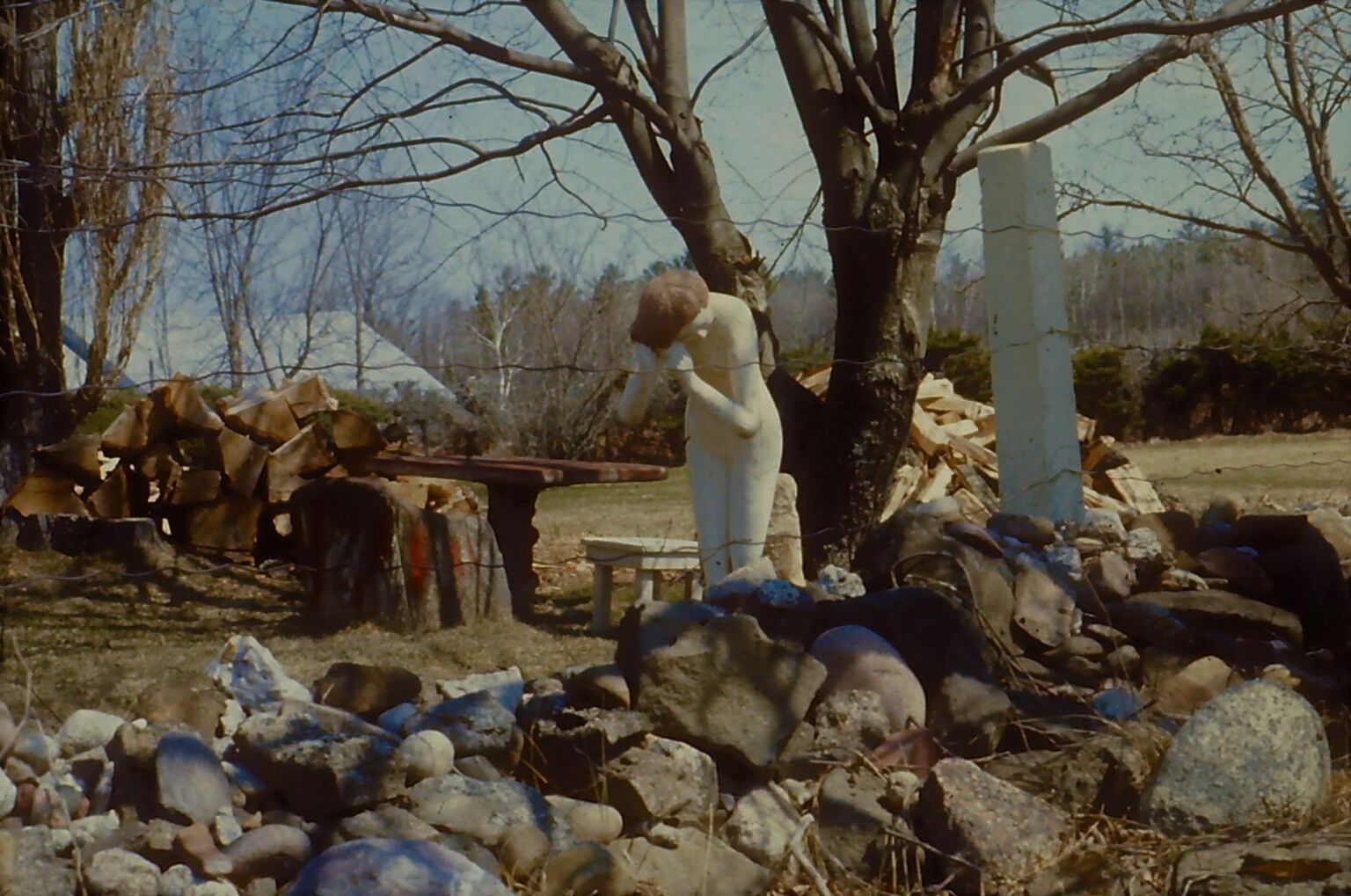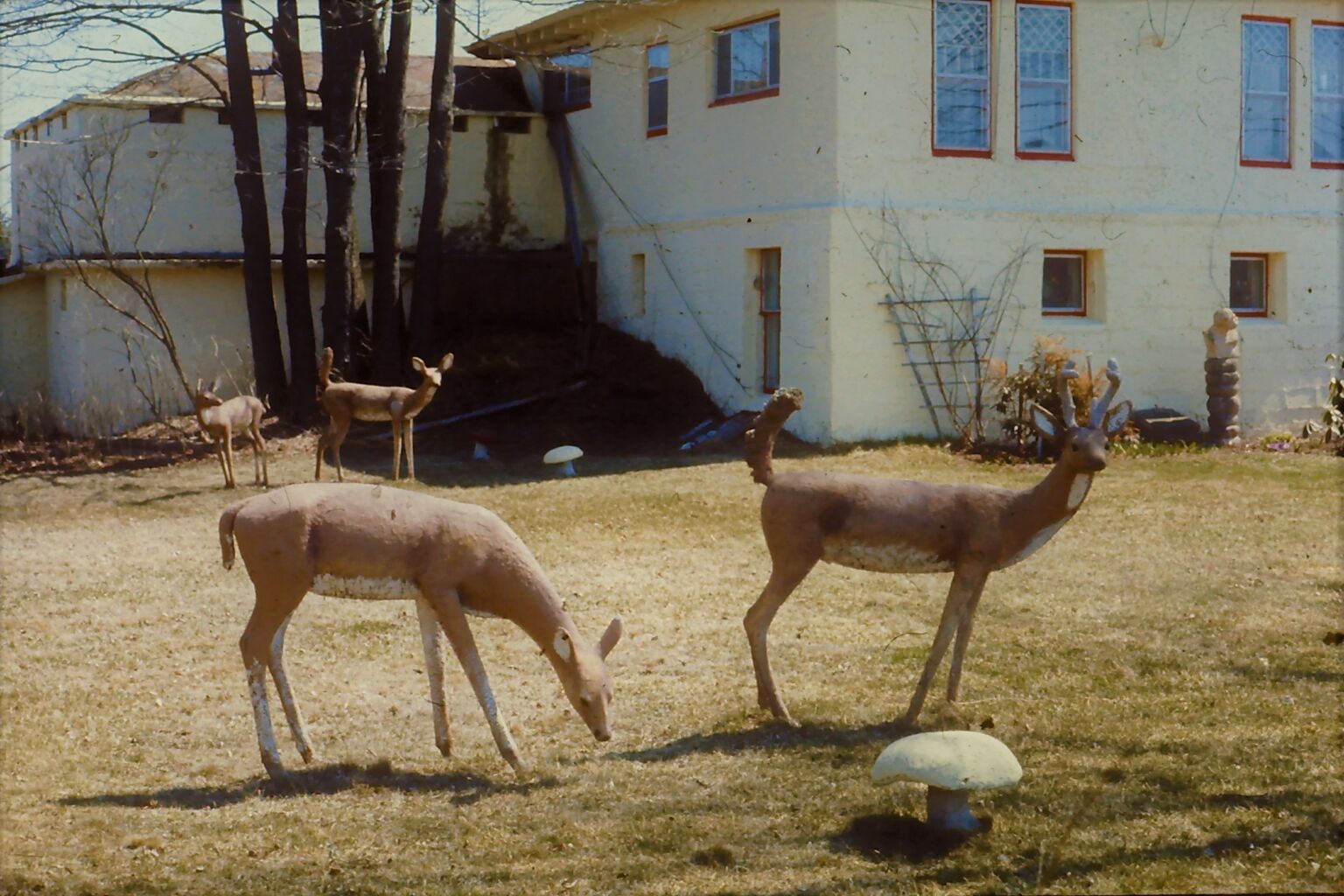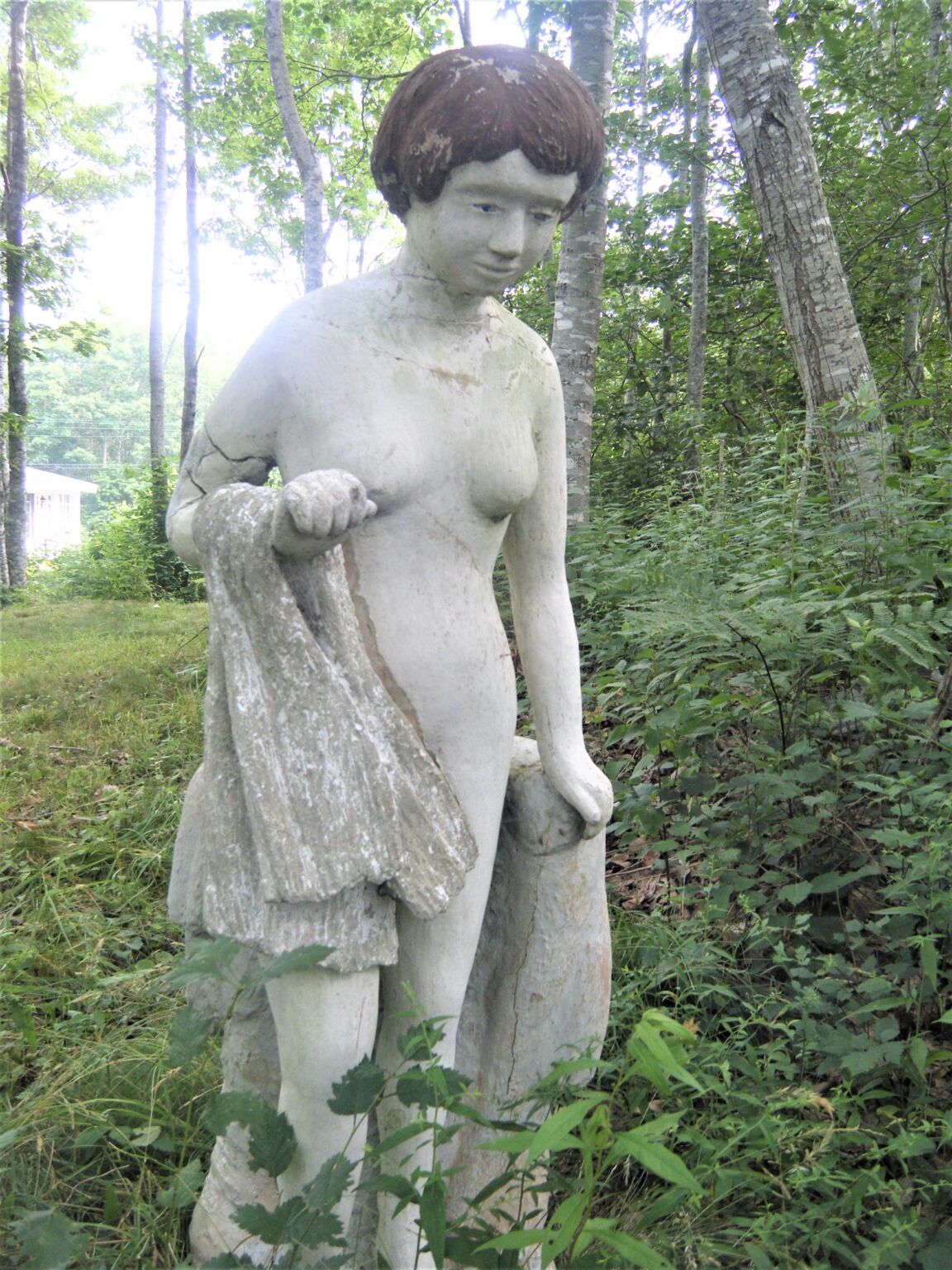While taking your great aunt for a lobster supper in Halls Harbour, have you ever been surprised by a small herd of concrete lawn deer, as you speed through Centreville, just north of Kentville?
And then perhaps, did you realize the deer share the yard with a naked concrete lady washing her hair? This is definitely not your white painted farmhouse of an old time valley Baptist. The gold concrete house and delight-filled yard was the home of artist, communist, and concrete plant owner Charles Macdonald and his wife Mabel. Special people indeed.
Charles Macdonald (1874-1967) had many enthusiasms, but his fantastic world of concrete is what’s most obvious to us today. The core of his rambling house started life as his concrete factory, but after he and Mable married in 1916 it became their home. Gradually the house and landscape took on a Mediterranean/South American spirit, with a playfulness and informality that makes you smile and rewards exploration.
Looking at these pictures makes me want to attend a boisterous, Italian country-style lunch on the grounds, with lots of local wine. Followed by a snooze under the trees.
Now the site is operated by the Charles Macdonald House of Centreville Society and I encourage you to sample their attractive website for the full history of Charlie and Mabel. It will also provide details about the location and visiting times. The house includes an art gallery and you will often find contemporary art installations on the grounds.
In the 1930s, Macdonald built a little colony of concrete cottages at Huntington Point, just along the Fundy shore from Halls Harbour. Their style is often described as whimsical (other descriptors could include eccentric, fanciful, and fairy-tale). The society owns one of these cottages and there is a process that would allow you to stay in it (check their website).
For a regular dose of the Macdonalds and their unconventional world, follow the lively Instagram: centrevilleconcretehouse. But nothing beats a visit, because the house is full of delightful collections and concrete details. When we visited last, a couple of years ago, we were greatly impressed with the lively summer guides who really enhanced our experience, and made it memorable.
- I’ve been noticing the Macdonald house and yard art since the 1970s, but it was a long time before I learned their story. These pictures were taken, over the fence, in the spring of 1974.
- Sheila is particularly interested in the Macdonalds’ next door neighbour, Roscoe Fillmore, who wrote gardening books, operated a nursery, and was the head gardener for the Grand-Pré site. Like Charlie, he was also a fervent socialist/communist and there are many colourful stories about how they concealed their activities from the RCMP.
A little mystery
Across the province, overlooking the Medway River, is a small cemetery associated with an African Nova Scotian community. It contains a concrete statue, that to my eye, is “in the style of Charlie Macdonald.” She appears to be going down to the river to bathe.








